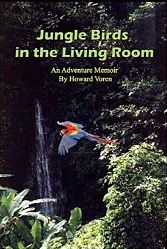Green-Winged Macaw Eggs
© Howard Voren. Click here to use this content.Q: We have a pair of green-winged macaws (Ara chloroptera) that have laid eight fertile eggs so far this year. We pull the eggs as she lays them and artificially incubate them. As their hatch date approaches, they make several pip marks below the air cell line. Several days later, they die in the shell without making any further attempt at hatching. We have opened a few of the eggs, and the chicks appear normal, but the shells are remarkably hard. Could this have anything to do with them pipping below the air cell and dying?
A: It is highly likely that there is an indirect link between the overly hard shells and the abnormal pipping behavior. Whenever I have had the problem of chicks going full term and then dying prior to hatching, it has been with large eggs (Amazons, greys, macaws and cockatoos). Upon sending quite a few of these “failed to hatch” eggs to some of the nation’s leading pathologists, I learned that, in their opinions, the vast majority of these problems occurred due to the chick being malpositioned or too wet.
In your particular case, it sounds like too “wet” is what we have to concern ourselves with. I am jumping to this conclusion for several reasons. The first reason is the fact that we are talking about green-winged macaw eggs. In macaws, it is usually the green wings and Buffon’s (Ara ambigua), not the scarlets (Ara macao) or militaries (Ara militaris), that have this problem. In African greys (Psittacus erithacus), it’s usually the large eggs laid by the Congos rather than the smaller eggs laid by the Ghanas that pile up the negative statistics. In the case of cockatoos, the large eggs laid by the Moluccan Cockatoo (Cacatua moluccensis) are the ones that most commonly fall into this category.
The second reason is that there is a strong suspicion that chicks that pip several times below the air cell line do so because they are too wet. Some people feel this is a desperate attempt on the part of the chick to rid the egg of excess moisture. Although this is just an unproven theory, it is consistent with most of my observations over the years.
The thing that really ties this all up into a nice neat package is the fact that you say that the shells are “remarkably hard.” Overly hard or thick shells will inhibit normal moisture loss over the incubation period. This results in an egg that is too wet to hatch properly. In this case, I would eliminate sources of calcium from the breeding pair’s diet. If any calcium supplementation is given, I would discontinue its use immediately. Wait and see if this helps the problem. If not, you might have to analyze your birds’ diet to determine if it is high in calcium without supplementation. Another measure you can take is lowering the incubation humidity to between 38 and 42 percent.


